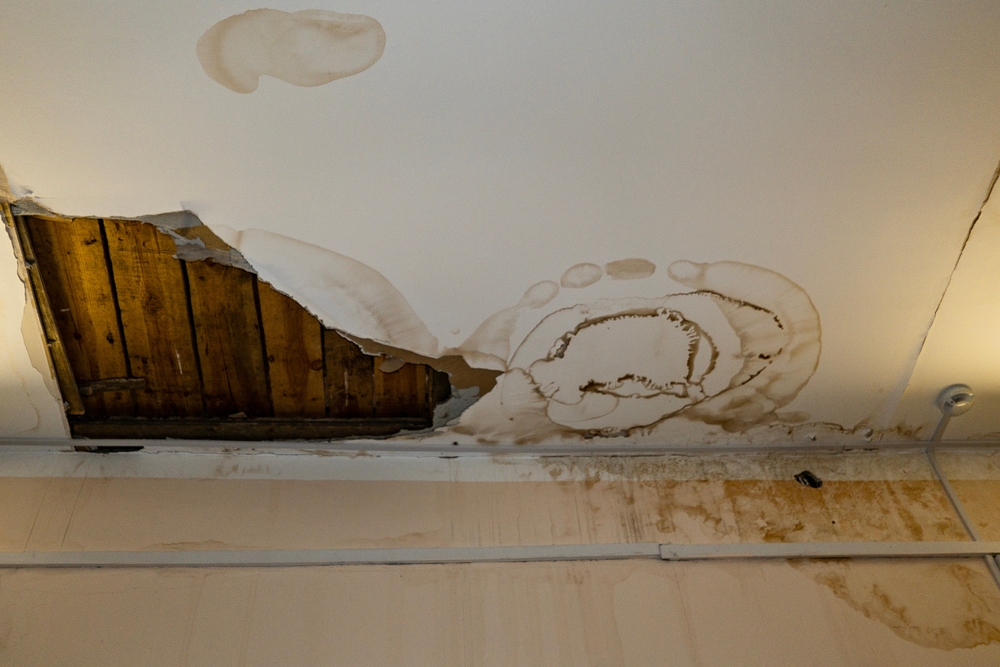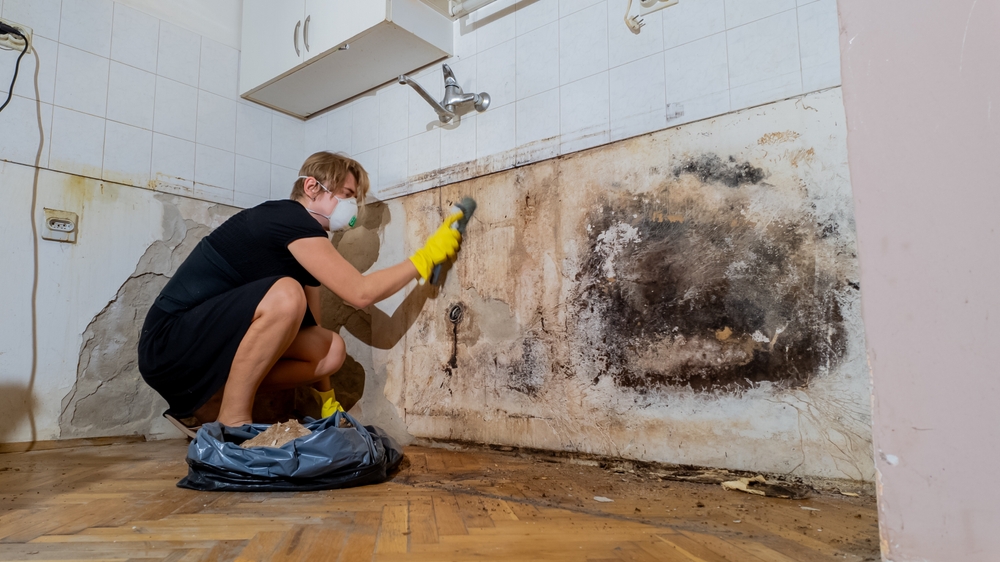Imagine returning home following a major storm and discovering evidence of water damage—damp walls, discolored ceilings, and destroyed personal items. Your homes insurance can become a vital safety net at difficult times, helping to restore your house and pay for repairs. Still, negotiating the water damage insurance claims procedure can be taxing. This book is meant to equip you with the knowledge you need to grasp your policy, properly document damage, and operate boldly with your insurance company to guarantee a just compensation.
In this post we discuss frequent exclusions, typical coverage for different kinds of water damage, and the methodical claim filing process. We will dissect important insurance terminologies such Replacement Cost Value (RCV) and Actual Cash Value (ACV), provide advice on how to deal with adjusters, and present ideas for optimizing your claim payoff. We will also show you how preventive steps—such as keeping a home inventory and frequent inspections—may enable you to be more ready for unplanned water damage.
Introduction
Whether from a burst pipe, an appliance breakdown, or a rapid roof leak, unexpected water damage may quickly transform your quiet house into a repair zone. Although homeowners insurance is meant to cover such crises, the claim process requires numerous specifics. Understanding your coverage, knowing the method to record the damage, and learning how to interact with your insurer can help you to confidently negotiate this difficult process. This article will explain the water damage insurance claim procedure and assist you in safeguarding your most valuable asset—your house.

Types of Water Damage Covered by Homeowners Insurance
Most homeowners’ insurance policies pay for unintentional and abrupt water damage brought on by “covered hazards”. Here are a few typical examples:
- Burst Pipes: Usually covered is a sudden pipe leak flooding your house.
- Appliance Malfunctions: Damage from a malfunctioning appliance—such as a dishwasher or washing machine—is sometimes included.
- Roof Leaks from Covered Perils: Should a covered event, such as wind or hail cause leaks in your roof, the subsequent damage could be qualified for a claim.
- Accidental Overflow: Usually covered is water damage resulting from an unintentional overflow of plumbing fittings.
Noteworthy are the differences between:
- Clean Water: Damage from sources like burst pipes, in which case the water is uncontainted, might affect clean water.
- Grey Water: Grey water—that which has been somewhat contaminated—from washing machines—may have limited coverage.
- Black Water: Usually lacking distinct endorsements, highly contaminated water—such as sewage—is not covered.
Knowing these categories will enable you to project what to expect from a claim.
Common Water Damage Exclusions
Although many unexpected water events are insured, several kinds of damage usually are not covered by regular policies:
- Flood Damage: Most homeowners insurance does not cover damage from flooding—heavy rains and storm surges—which calls for specialized flood insurance.
- Sewer Backups: Some plans restrict damage from sewer backups unless you have additional particular coverage.
- Gradual Leaks or Deterioration: Usually excluding damage from long-term leaks or inadequate maintenance is gradual leeks or deterioration.
- Damage from Earth Movement: Sometimes water damage from earth movement—that is, from an earthquake—may not be insured.
Examining your policy closely can help you to grasp these exclusions, so preventing surprise when it comes time to submit your claim.
The Water Damage Claim Process: Step-by-Step
After a water damage occurrence, a methodical approach can assist to expedite your claim process:
Step 1: Immediate Mitigation
- Safety First: Concerns Safety To stop more risks, first turn off the water source and the electrical power if needed.
- Prevent Further Damage: With mops, towels, or a wet/dry vacuum, remove standing water. Dry the impacted space with blowers and use dehumidifiers.
- Document Everything: Get clear pictures and videos of the damage, including structural damage and personal items impacted. Supporting your argument depends critically on thorough documentation.
Step 2: Contact Your Insurance Company
- Report Promptly: Give your insurance company a call right away. Most policies call for reporting damage within a designated period.
- Provide Initial Details: Share what happened, the degree of damage, and get a claim number. Save all of your correspondence.
Step 3: Documentation and Inventory
- Create a Detailed Inventory: List any broken objects, including dates, descriptions, and expected repair or replacement prices.
- Gather Supporting Evidence: Get receipts, maintenance records, and any past inspection notes. You might also strengthen your claim with a home inventory.
Step 4: Insurance Adjuster Inspection
- Prepare Thoroughly: To evaluate the damage, an adjuster will pay you a visit at home. Get ready with your documents and inventory.
- Engage Actively: Take notes and probe during the inspection. Knowing what the adjuster is looking for will enable you to make sure nothing goes missed.
Step 5: Receiving the Claim Settlement
- Review the Offer Carefully: Either Replacement Cost Value (RCV) or Actual Cash Value (ACV) may form basis for your settlement. While RCV covers the entire replacement cost, ACV allows for depreciation.
- Negotiate if Needed: If the offer seems poor, bolster your case with further proof or independent repair quotes.
Careful application of these guidelines will enable you to effectively negotiate the claims procedure and raise your chances of a just compensation.

Understanding Key Insurance Terms
You need must understand your insurance policy. Here are some important vocabulary words:
- Actual Cash Value (ACV):
The replacement cost less depreciation is known as actual cash value (ACV.). It shows, after considering wear and tear, the present worth of damaged goods. - Replacement Cost Value (RCV):
Without regard to depreciation, RCV—the cost to replace a damaged item with a new one—is Policies with RCV often cover greater ground overall. - Policy Limits:
Your insurer will pay maximum amounts for a claim here. Should your damages above these restrictions, you could be required to pay the difference. - Deductibles:
The amount you pay out of cash prior to your insurance starting to pay is the deductible. For instance, you are liable for the first $1,000 should your deductible be $1,000 and your claim be $5,000. - Depreciation:
Depreciation is the gradual decline in worth of your possessions brought on by aging and use. It influences the pay-off under ACV coverage.
Understanding these words guarantees that you will be more ready when you present your claim to your insurance provider and enables you to grasp your policy.
Working with Insurance Adjusters
Insurance adjusters evaluate the damage and figure your claim’s worth. These pointers apply to dealing with them:
- Be Prepared:
Organize all of your pictures, videos, and documentation before the adjuster shows up. - Communicate Clearly:
Clearly and succinctly explain the damage; then, respond to their queries honestly. Save your conversation for records. - Ask Questions:
Clearly explain anything that looks confusing, such why some objects were valued a particular manner or what aspects of the damage are covered. - Consider a Public Adjuster:
Think about consulting a public adjuster if you think your claim is undervalued or if the process seems overly taxing. Usually charging a fee based on a percentage of the settlement, these experts work on your behalf to help optimize your claim compensation.
Maximizing Your Claim Payout
Maintaining these ideas will help you to maximize the results of your claim:
- Document Thoroughly:
Detailed records of damage, repair estimates, and communication with your insurer strengthen your claim. - Keep Communication Records:
Save emails, note everything you say on phone calls, and record every stage of the operation. - Review the Settlement Offer:
Should the first offer be too low, do not hesitate to bargain. If necessary, show separate repair estimates. - Understand Your Policy:
Knowing the conditions of your policy will enable you to question any disparities or undervaluation. - Be Patient and Persistent:
The claims procedure can be slow. Stay proactive in your contacts and follow up often.
Conclusion
Although knowing how to manage your insurance claim will help reduce the financial and emotional strain water damage can cause. Not forget these important ideas:
- Know which water damage events are covered and which are not.
- Act fast to minimize more damage and record all you accomplish.
- Report the occurrence, record the damage, deal with an adjuster, and closely check the settlement following a methodical approach.
- Learn important insurance vocabulary including ACV and RCV.
- Keep open lines of contact with your insurer and don’t hesitate to consult a specialist should need.
Following these guidelines will help to guarantee that you get a just compensation and that your house returns to normal as soonest possible. See Philadelphia repair Services for further direction on water damage and professional repair services.
Philadelphia Restoration Services
https://www.google.com/maps?cid=3399342399556699153
+1 267 668 0013
https://philadelphiarestorationservices.com/


